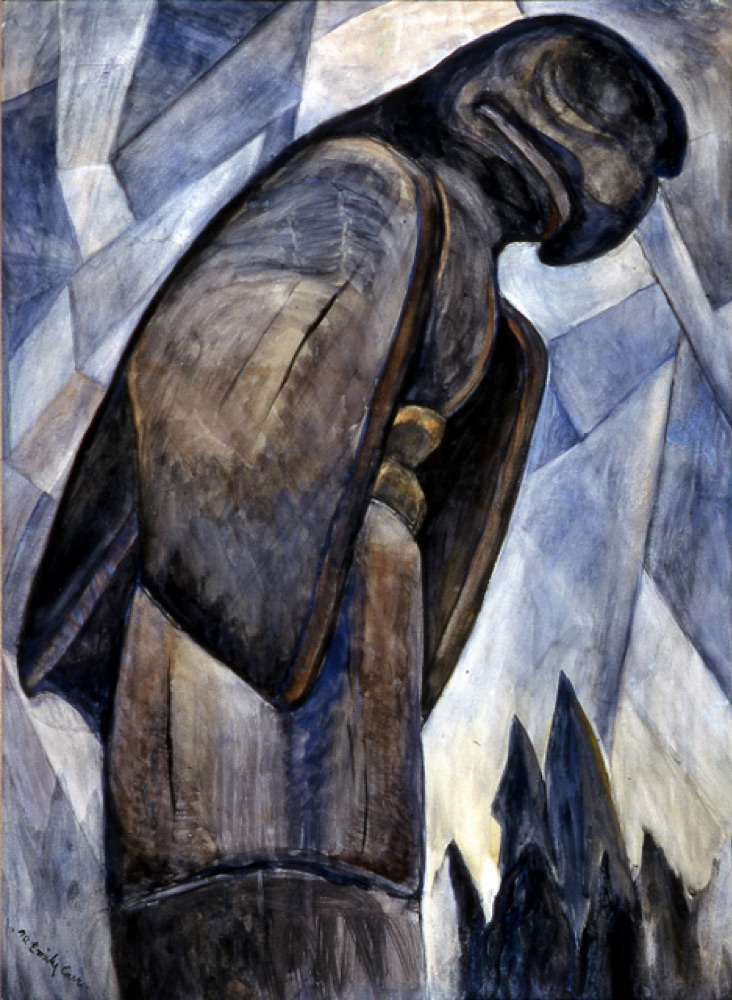wcag heading
“In the letter she said that her father had said something to her. Something horrible and unforgivable.”
“The Brutal Telling.”
“That’s how she described it.”
(The Brutal Telling)
If you’ve read Louise’s fifth novel in the Inspector Gamache Series, you’ll recognize this scene, in which Clara Morrow explains the phrase “The Brutal Telling”. The phrase was first used by the Modernist Canadian painter Emily Carr to describe a horrific falling out with her father.
 Here she is with her Javanese monkey, Woo, who plays an important part in Louise’s book. And as Superintendent Therese Brunel points out, “She adored all animals, but Woo above all.”
Here she is with her Javanese monkey, Woo, who plays an important part in Louise’s book. And as Superintendent Therese Brunel points out, “She adored all animals, but Woo above all.”
Carr was born in 1871 in British Columbia, one of nine children and, by all accounts, had a relatively stable childhood up until “The Brutal Telling” episode. Clara describes the mysterious incident to Inspector Gamache as thus, “She went from being a happy, carefree child to an embittered woman. Very solitary, not very likable.” Whatever terrible transgression took place (to this day, the details are unknown), it propelled Emily to travel to the isolated regions of Canada where she recorded, through her paintings, the vanishing indigenous cultures that resided there.
 The similarities between the real life Carr and Louise’s Clara are apparent. Both, of course, are painters and in a scene late in the novel, Superintendent Brunel and Clara sit before a statue of Carr where Therese tells Clara, “She looks a bit like you”. This is also the point in the book in which Brunel—while examining Clara’s painting —exclaims, “The Fall. My God, you’ve painted the Fall. That moment. She’s not even aware of it, is she? Not really, but she sees something, a hint of the horror to come. The Fall from Grace.”
The similarities between the real life Carr and Louise’s Clara are apparent. Both, of course, are painters and in a scene late in the novel, Superintendent Brunel and Clara sit before a statue of Carr where Therese tells Clara, “She looks a bit like you”. This is also the point in the book in which Brunel—while examining Clara’s painting —exclaims, “The Fall. My God, you’ve painted the Fall. That moment. She’s not even aware of it, is she? Not really, but she sees something, a hint of the horror to come. The Fall from Grace.”
The Fall from Grace. . . .
See our previous post on A Rule Against Murder and Milton’s Paradise Lost to see how deftly and deeply these novels interweave with one another. It really is quite amazing!
Oh, and remember Clara’s own description of Emily Carr? “. . . an embittered woman. Very solitary, not very likable.”
Kinda reminds me of a certain rascally poet who also has fondness for out-of-the-ordinary pets. . . .


41 replies on “CULTURAL INSPIRATIONS FROM THREE PINES: THE BRUTAL TELLING”
To me Three Pines is a real place, even if not on the map, and though it appears to be a place of retreat, a place where the inhabitants can just be themselves and still feel warmly welcomed, supported, and accepted, it still must encounter murders and dark happenings, like any other place on earth. What makes Three Pines different? The people who have traveled there “from away” and/or who have chosen to live there live lives of second chances, filled with great love and acceptance. Just my opinion.
I am rereading the entire series for a second time, and am discovering a depth not so deeply felt the first time through. It now seems to me that Three Pines exists within each soul, each individual, as well as a sanctuary within each community within which we live. It feels to me like the space in which we can learn to live “on this Earth, but not of it”, a place deep within of connection with the Self with a capital “S”, and with Universe. We see Three Pines through Gamache’s eyes, as he experiences such deep pain, and begins to heal. Three Pines is a safe place for him, even when coping with Gabri’s situation. Beauvoir fights all of this “peace stuff”, but there is healing for him, too, with, of all people, Ruth! All of this is within each of us – healing. And this healing comes, in part, I feel, as we recognize within us Universal Art, Poetry, History, Culture, so beautifully shared by Louise, and existing within and from Three Pines, a Trinity of Universe, Earth, and Connection. Thank you, Louise!
My thoughts exactly! I love going there, to be surrounded by such dear and sometimes challenging friends and family. These culture inspirations lend to our visits.
I only discovers these novels in January this year,purely by accident in my local library ( in Suffolk Uk). I read first ‘The Beautiful Mystery’ and then ordered all the others from my library not reading them in any order. I have now bought the first 3 and am reading them chronologically . They are affecting me deeply, challenging me and helping me explore issues and spiritual matters I have not looked at for a long while. I am an avid reader and every now and then an author comes a long whose characters and stories shine a light into ones soul. This is what your works have done for me Louise. I am still puzzling over their meaning. Are they morality plays, is ‘ Three Pines’ paradise lost and found? What does the Arnot case and its reoercusions represent Who is Gamanche? So much to think about and enjoy and be challenged by .
Your comments reflect my experience with Louise’s Gamache that I could not expand on it. I am now rereading all of the books in chronological order to remember the pieces I rushed over to finally get the conclusion in all of her books. A Beautiful Mystery had been my favorite but I am getting a better feel for the places and people she describes so beautifully. Layers and layers of meaning and I wish I could translate the french which is sprinkles throughout.
She usually paraphrases the translation of any French utterances in the next paragraph – you’re not missing anything.
I just finished A Great Reckoning this morning, and one scene moved me to tears. It’s a greeting ceremony for a child, when the celebrant asks – “Who stands for this child?” and the whole village gets to its feet. Lovely.
You’re not the only one. That scene moved me to tears also.
Suggests a thread to me. The liberation solitude offers. Look first at Carr ‘ s splendid work. Because she was driven to retreat, her vision came to full flowering. And although she was understandably embittered by a very hard, impoverished life, where few could appreciate her, the work itself is full of tenderness.
Tenderness- what a lovely, true word to describe Emily Carr’s paintings.
Her separation from other people led her to real insight, and what a blessing she
had the gift to share this with others in time to come. Louise Penny shares this
insight, I believe- how generously she has given her talents to so many!